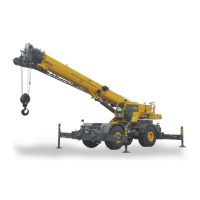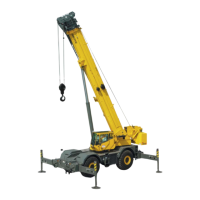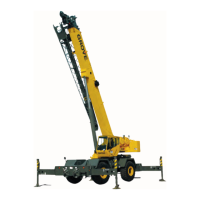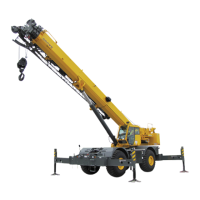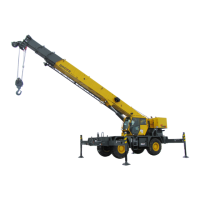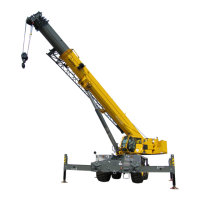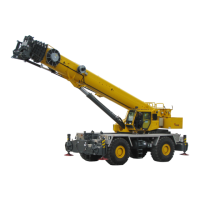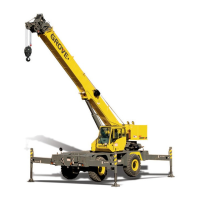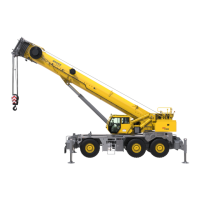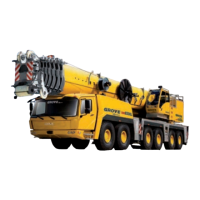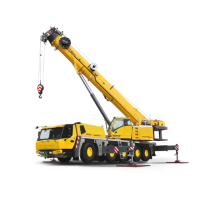2-19
RT765E-2 SERVICE MANUAL HYDRAULIC SYSTEM
Published 9-04-2014, Control # 422-08
4. Install pump and gasket on engine drive pad with
capscrews and washers. Make sure the splines mesh
properly. Torque capscrews; refer to Fasteners and
Torque Values, page 1-16 for proper torque value.
5. Connect the distribution and supply lines as tagged
during removal. Use new o-rings on the connections to
the pump.
No. 3 Pump Removal
1. Gain access to the pump. It is bolted to the left side of
the engine’s torque converter.
2. Tag and disconnect the supply line from the pump. Cap
or plug the line and port.
3. Tag and disconnect the pump distribution line from the
pump. Cap or plug the line and port.
4. Remove the capscrews and washers attaching the No. 3
pump to the drive pad on the torque converter. Remove
the pump.
5. Clean the gasket material from the drive pad on the
torque converter and the pump.
6. Cover the drive pad’s opening to prevent dirt from
entering.
No. 3 Pump Installation
1. Clean the drive pad and the pump with Loctite cleaning
solvent 7070 or similar non chlorinated solvent.
2. Apply a light coating of Loctite primer N7649 to drive pad
and pump mounting surfaces. Allow primer to dry for one
to two minutes. Primer must be dry. Mating of parts
should occur within five minutes.
3. Apply gasket material Loctite Master Gasket 518 to drive
pad and pump mounting surface.
4. Install pump and gasket on torque converter drive pad
with capscrews and washers. Make sure the splines
mesh properly. Torque capscrews; refer to Fasteners
and Torque Values, page 1-16 for proper torque value.
5. Connect the distribution and supply lines as tagged
during removal. Use new o-rings on the connections to
the pump.
Testing After Repair or Replacement
1. Ensure the reservoir is filled with the proper hydraulic
fluid to the high level mark on the reservoir sight gauge.
2. Ensure no air is entering the pump inlet, and that the
pump suction or inlet fluid is not bleeding back to the
reservoir when the engine is stopped, by making sure all
suction or inlet lines are air tight.
3. Remove all pump outlet hoses. Fill pump outlet port of
each pump section with as much hydraulic oil as it can
take. Connect all pump outlet hoses again.
4. Start the engine and idle it for two or three minutes
without running any hydraulic functions. Check for leaks;
as needed, stop the engine and make repairs.
CAUTION
Absolute cleanliness is essential when working on the
hydraulic pumps. Always work in a clean area. The
presence of dirt and foreign materials in the system can
result in serious damage or inadequate operation.
CAUTION
Keep the pump as level as possible to avoid damaging
the input spline.
CAUTION
Do not feed hot hydraulic oil into a cold pump. This may
cause the pump to seize.
CAUTION
If the pump becomes hot to the touch, it is binding and
may seize. Stop engine, disassemble pump, and repair it
so it will not bind.
For Pump No. 3, pay special attention to the service brake
charge pump if your crane has the dual accumulator
charging valve for hydraulic service brakes.
If the dual accumulator charge is set too high, the pump
will continually push all its flow through an integral relief
valve that dumps the heated fluid back into the pump’s
inlet. This causes a “hot loop” problem that will very
quickly heat the pump section above hydraulic reservoir
temperature. If this happens, stop the engine immediately.
If it is suspected that the dual accumulator is set too high,
perform steps under Procedure F - Brake Dual
Accumulator Charge Valve Pressure Limits, page 2-26 to
verify proper cut-in and cut-out pressures. Replace valve
if pressures are not correct. Then perform Step 5 again.
Reference Only

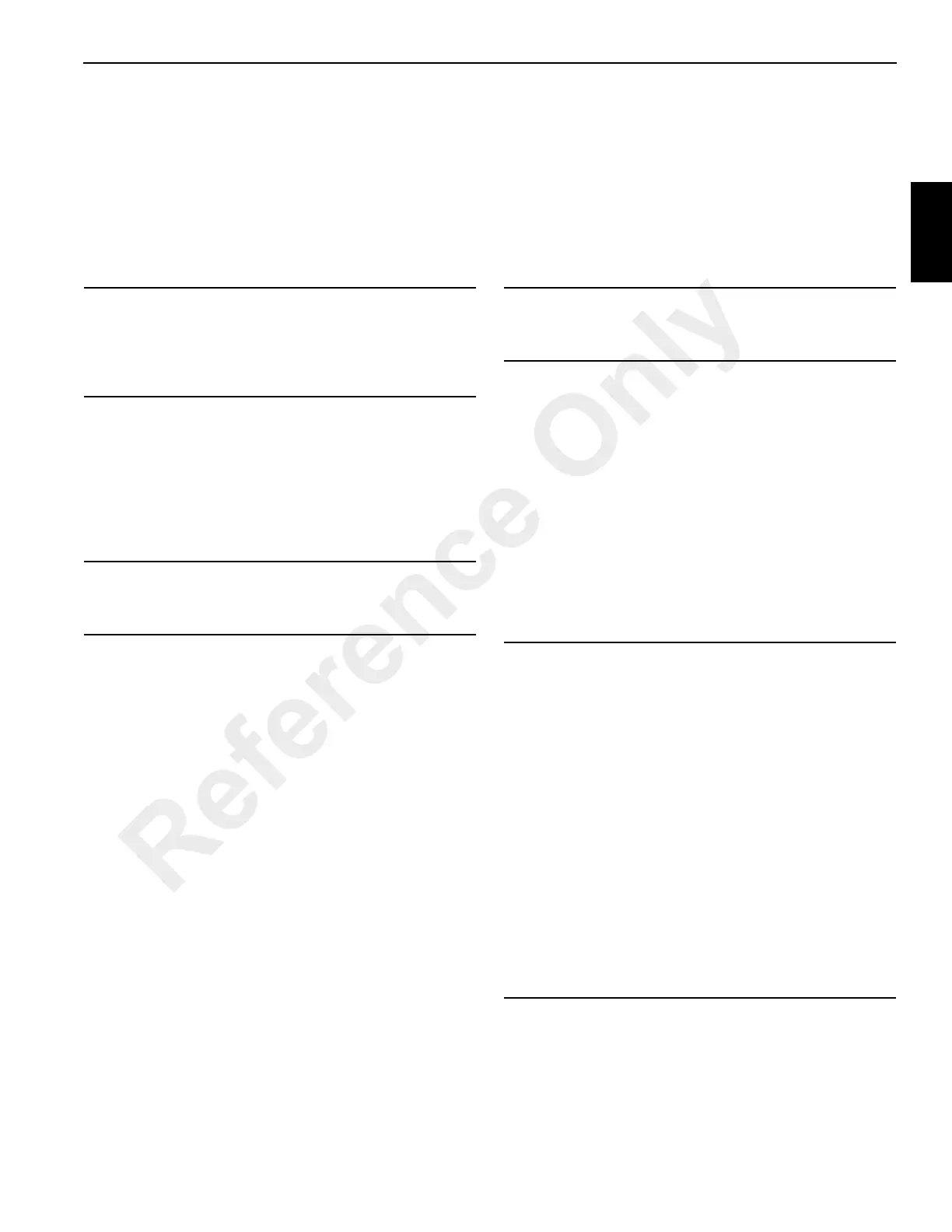